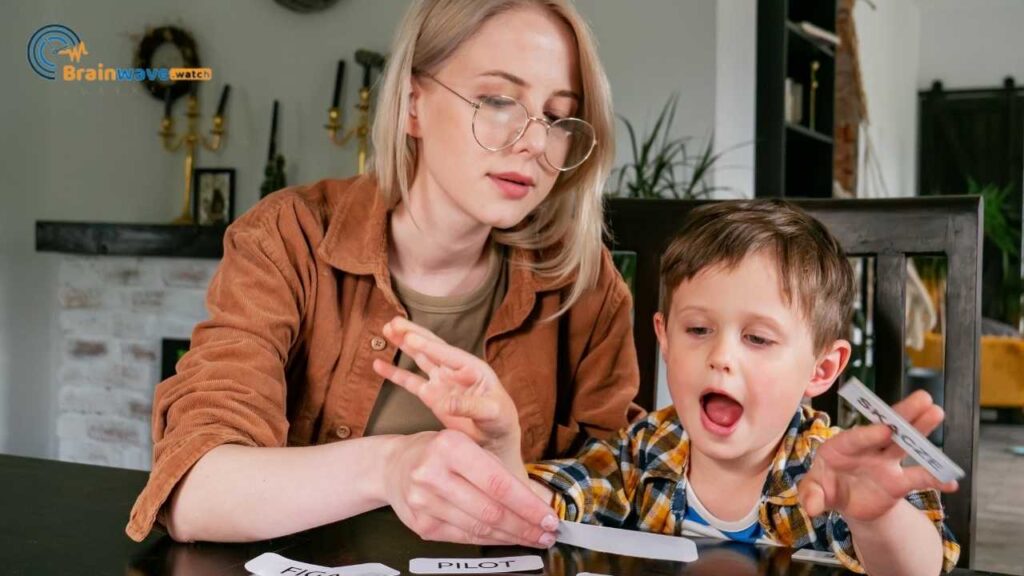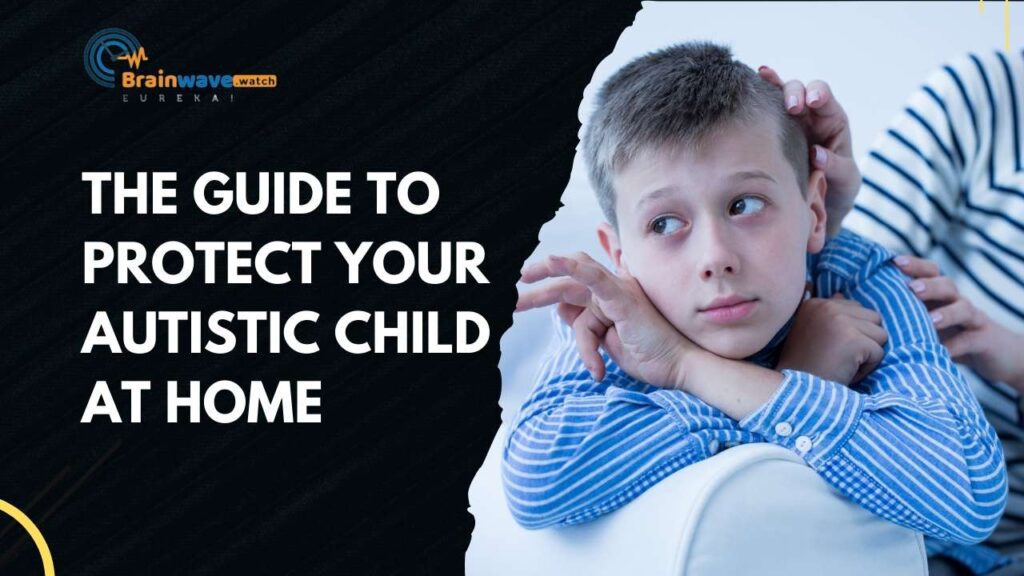Autism Spectrum Disorder (ASD) is a neurodevelopmental disorder that affects communication, social interaction, and behavior. It is a complex disorder that can manifest in a variety of ways, ranging from mild to severe.
Individuals with autism may have difficulty with verbal and nonverbal communication, repetitive behaviors, and sensory processing. They may also have difficulty with social interaction, such as making eye contact, understanding social cues, and expressing emotions.
It is important to note that autism is a spectrum disorder, meaning that each individual with autism is unique and may have different strengths and challenges. Some individuals with autism may have exceptional abilities in areas such as music, art, or math.
There is no known cure for autism, but early intervention and therapy can greatly improve outcomes for individuals with autism. It is important to approach individuals with autism with patience, understanding, and respect.
Here are some key points to keep in mind when interacting with someone with autism:
- Use clear and concise language
- Avoid sarcasm and figurative language
- Give the individual time to process information and respond
- Respect the individual’s need for routine and predictability
- Be mindful of sensory sensitivities and adjust the environment accordingly
By understanding the unique challenges and strengths of individuals with autism, we can better support and include them in our communities.
Communication Strategies

1. Verbal Communication Tips
When communicating with someone with autism, it is important to use clear and concise language. Avoid using figurative language or sarcasm, as it may be confusing or misinterpreted. Speak in a calm and even tone, and allow time for the person to process and respond to what you are saying.
It may also be helpful to use visual aids or social stories to reinforce verbal communication. This can help the person better understand social cues and expectations.
2. Non-verbal communication Aids
Non-verbal communication aids can be helpful for individuals with autism who struggle with verbal communication. These aids can include picture boards, sign language, or electronic communication devices.
It is important to work with the individual to determine which aid works best for them, as everyone’s communication needs are unique. Be patient and supportive as they learn to use the aid effectively.
By using these communication strategies, individuals with autism can better understand and engage with the world around them, leading to improved social and emotional well-being.
Creating a Supportive Environment

1. Structured Routine
Individuals with autism often thrive on routine and predictability. Therefore, creating a structured routine can be beneficial for them. This routine should include a set schedule for daily activities such as meals, playtime, and bedtime. It is important to ensure that the routine is consistent and predictable to help reduce anxiety and stress.
One way to establish a routine is to use visual aids such as pictures, charts, or calendars. These can help the individual understand what is expected of them and what will happen next. It is also important to allow for some flexibility in the routine to accommodate unexpected events or changes.
2. Sensory-Friendly Spaces
Sensory overload can be a significant challenge for individuals with autism. Creating sensory-friendly spaces can help reduce sensory overload and provide a calming environment. These spaces should be quiet, free from distractions, and have comfortable seating.
It is also important to consider the lighting, temperature and smells in the space. Soft lighting, comfortable temperatures, and calming scents can all contribute to a sensory-friendly environment. Additionally, providing sensory tools such as weighted blankets, fidget toys, or noise-canceling headphones can help the individual regulate their sensory input.
Overall, creating a supportive environment for individuals with autism can greatly improve their quality of life. By establishing a structured routine and providing sensory-friendly spaces, caregivers can help reduce anxiety and stress and promote a sense of calm and security.
Behavioral Support

1. Positive Reinforcement
One of the most effective ways to help someone with autism is through positive reinforcement. This involves rewarding good behavior and ignoring or redirecting unwanted behavior. Positive reinforcement can be in the form of praise, a small treat, or a preferred activity. It is important to be consistent with reinforcement and to use it immediately after the desired behavior occurs.
For example, if a child with autism is learning to brush their teeth independently, the caregiver can provide positive reinforcement by praising the child and giving them a small reward, such as a sticker or a few minutes of their favorite activity, after they successfully brush their teeth.
2. Coping Mechanisms
Individuals with autism may experience sensory overload or become overwhelmed in certain situations. Providing coping mechanisms can help them manage their emotions and behavior. Coping mechanisms can include deep breathing exercises, sensory toys, or a designated quiet space to retreat to.
It is important to identify the individual’s specific triggers and provide coping mechanisms that work for them. For example, if a child with autism becomes overwhelmed in a noisy environment, the caregiver can provide noise-canceling headphones or earplugs to help them cope.
By using positive reinforcement and providing coping mechanisms, caregivers can help individuals with autism positively manage their behavior and emotions.
Social Skills Development

1. Interactive Play
Interactive play is an important way to help individuals with autism develop social skills. This type of play involves engaging in activities with others, such as board games, puzzles, and sports. Through interactive play, individuals with autism can learn how to take turns, share, and communicate with others.
It is important to choose activities that are appropriate for the individual’s age and skill level. It may also be helpful to provide clear instructions and model appropriate behavior during the activity. Positive reinforcement, such as praise and rewards, can also be effective in encouraging social skills development through interactive play.
2. Social Stories
Social stories are another effective way to help individuals with autism develop social skills. Social stories are short narratives that describe social situations and appropriate behaviors. These stories can help individuals with autism understand social cues and learn how to respond in different social situations.
When creating social stories, it is important to use simple language and include visual aids, such as pictures or diagrams. The stories should also be tailored to the individual’s specific needs and interests. Reading social stories regularly can help individuals with autism develop social skills and improve their ability to interact with others.
Overall, social skills development is an important aspect of helping individuals with autism. Interactive play and social stories are two effective strategies that can be used to promote social skills development in individuals with autism.
Educational Support

1. Individualized Learning Plans
Individualized Learning Plans (ILPs) are an essential tool for helping students with autism succeed in school. An ILP is a personalized plan that outlines the specific needs and goals of the student. It is created in collaboration with the student’s parents, teachers, and any other professionals involved in their care. The ILP should include information on the student’s strengths and challenges, as well as any accommodations or modifications that will be necessary to help them succeed.
Some common accommodations for students with autism include extra time on tests, the use of visual aids, and the ability to take breaks when needed. The ILP should also include specific goals for the student, such as improving social skills or increasing academic achievement. By creating an ILP, teachers can ensure that each student’s unique needs are being met and that they are receiving the support they need to succeed.
2. Inclusive Education
Inclusive education is another important aspect of supporting students with autism. Inclusive education means that students with disabilities are included in the same classroom as their typically developing peers. This can help students with autism develop social skills, build friendships, and learn from their peers. Inclusive education also helps to reduce stigma and promote acceptance of differences.
To make inclusive education successful, teachers may need to modify their teaching strategies to meet the needs of all students in the classroom. This may include using visual aids, breaking down complex tasks into smaller steps, and providing extra support when needed. Teachers may also need to work closely with parents and other professionals to ensure that each student’s needs are being met.
Overall, educational support is crucial for helping students with autism succeed in school. By creating individualized learning plans and promoting inclusive education, teachers can ensure that each student is receiving the support they need to reach their full potential.
Health and Safety

1. Nutrition and Exercise
Maintaining a healthy diet and regular exercise routine can greatly benefit individuals with autism. It is important to consult with a healthcare professional to determine the appropriate nutritional and exercise plan for each individual’s needs.
A balanced diet rich in fruits, vegetables, whole grains, and lean proteins can help improve overall health and reduce the risk of chronic diseases. It is also important to limit processed foods and sugary drinks.
Regular exercise can help improve physical fitness, reduce stress and anxiety, and promote better sleep. Exercise should be tailored to the individual’s abilities and interests. This may include activities such as swimming, yoga, or team sports.
2. Emergency Preparedness
Individuals with autism may require special accommodations in emergencies. It is important to have a plan in place to ensure their safety.
This may include creating a communication plan to help the individual understand the emergency and what actions to take. It is also important to have a designated safe space and to practice emergency drills regularly.
Additionally, it may be helpful to have a medical alert bracelet or other identification to inform emergency responders of the individual’s special needs.
Legal Rights and Advocacy

1. Disability Rights
Individuals with autism have legal rights that protect them from discrimination and ensure access to necessary services. The Americans with Disabilities Act (ADA) and the Individuals with Disabilities Education Act (IDEA) are two federal laws that provide legal protection for individuals with disabilities, including autism.
The ADA prohibits discrimination against individuals with disabilities in employment, housing, public accommodations, and other areas. This includes providing reasonable accommodations to individuals with disabilities to ensure equal access to services and opportunities. For example, a person with autism may require a quiet workspace or additional time to complete tasks, and the employer must provide these accommodations if they do not create an undue burden.
The IDEA requires schools to provide a free and appropriate public education (FAPE) to students with disabilities, including autism. This includes individualized education plans (IEPs) that outline the student’s needs and goals, as well as any necessary accommodations or services.
2. Community Resources
Advocacy organizations and community resources can provide support and guidance for individuals with autism and their families. The Autism Society of America, Autism Speaks, and the National Autism Association are just a few organizations that provide resources and support for individuals with autism and their families.
In addition, local community organizations and support groups can provide valuable resources and connections for individuals with autism and their families. These groups may offer social activities, educational resources, and support for individuals with autism and their families.
Overall, understanding legal rights and accessing community resources can be crucial in ensuring that individuals with autism receive the support and services they need to thrive.
Family and Caregiver Support

Caring for someone with autism can be challenging, and family members and caregivers need to have access to the support they need.
1. Respite Care
Respite care is a service that provides temporary relief for primary caregivers. It can be a valuable resource for families of individuals with autism, as it allows caregivers to take a break from their responsibilities and recharge. Respite care can be provided in a variety of settings, including in-home, community-based, or residential facilities.
2. Support Groups
Support groups can provide a sense of community and understanding for family members and caregivers of individuals with autism. These groups can offer a safe space to share experiences, ask questions, and receive emotional support. Support groups can be found online or in person, and can be specific to a particular age group or type of autism.
Family members and caregivers need to take care of themselves to provide the best care for their loved ones with autism. Seeking out respite care and support groups can help alleviate stress and provide a sense of community.
Transition Planning
Transition planning is an essential part of helping someone with autism prepare for adulthood. It involves identifying and developing the skills necessary for a successful transition to employment, independent living, and community engagement.
1. Employment Preparation
Individuals with autism may face unique challenges when seeking employment. Transition planning should include identifying their strengths and interests, developing job skills, and exploring job opportunities.
One effective way to prepare for employment is through vocational training programs that offer job-specific training and support. These programs can help individuals with autism develop the skills necessary to succeed in the workplace, such as communication, time management, and problem-solving.
Another important aspect of employment preparation is developing a resume and cover letter. These documents should highlight the individual’s skills and experience and effectively communicate their qualifications to potential employers.
2. Independent Living Skills
Transition planning should also include developing independent living skills to help individuals with autism live independently and successfully in the community. These skills may include cooking, cleaning, budgeting, and transportation.
One effective way to develop these skills is through life skills training programs that provide hands-on training and support. These programs can help individuals with autism learn practical skills and gain the confidence necessary to live independently.
In addition to life skills training, it may be helpful to seek out community resources, such as support groups and community centers, that offer opportunities for social engagement and skill-building. These resources can help individuals with autism develop a sense of community and support as they navigate the transition to adulthood.







